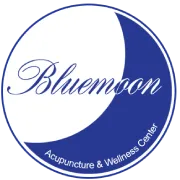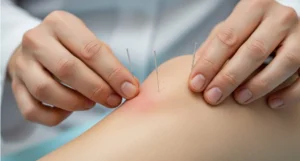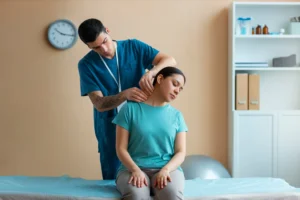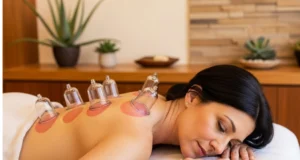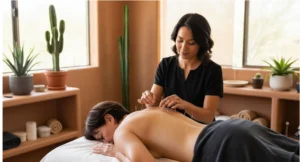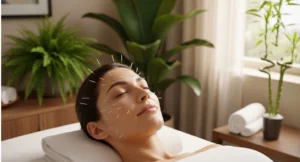Did you know that recent studies show that approximately 350 million people worldwide suffer from arthritis? And that number includes men and women, both children and adults, with nearly 40 million people in the U.S affected by this disease.
Definition of Arthritis
The Mayo Clinic defines arthritis this way: “Arthritis is the swelling and tenderness of one or more of your joints. The main symptoms of arthritis are joint pain and stiffness, which typically worsen with age.
The most common types of arthritis are osteoarthritis and rheumatoid arthritis. Osteoarthritis causes cartilage — the hard, slippery tissue that covers the ends of bones where they form a joint — to break down. Rheumatoid arthritis is a disease in which the immune system attacks the joints, beginning with the lining of joints.”
Symptoms of both osteoarthritis and rheumatoid arthritis can include pain, inflammation, stiffness, redness, and decreased range of motion. Those suffering might notice a tightness or redness of the skin around the effected joints. And both forms of arthritis cause damage in different ways.
Impact on Quality of Life
According to doctors at the Mayo Clinic, with osteoarthritis, “cartilage cushions the ends of the bones and allows nearly frictionless joint motion but enough damage can result in bone grinding directly on bone, which causes pain and restricted movement. This wear and tear can occur over many years or it can be hastened by a joint injury or infection.”
Osteoarthritis
Osteoarthritis, “also causes changes in the bones and deterioration of the connective tissues that attach muscle to bone and hold the joint together. If cartilage in a joint is severely damaged, the joint lining may become inflamed and swollen.”
Rheumatoid Arthritis
With rheumatoid arthritis, “the body’s immune system attacks the lining of the joint capsule, a tough membrane that encloses all the joint parts. This lining becomes inflamed and swollen. The disease process can eventually destroy cartilage and bone within the joint.”
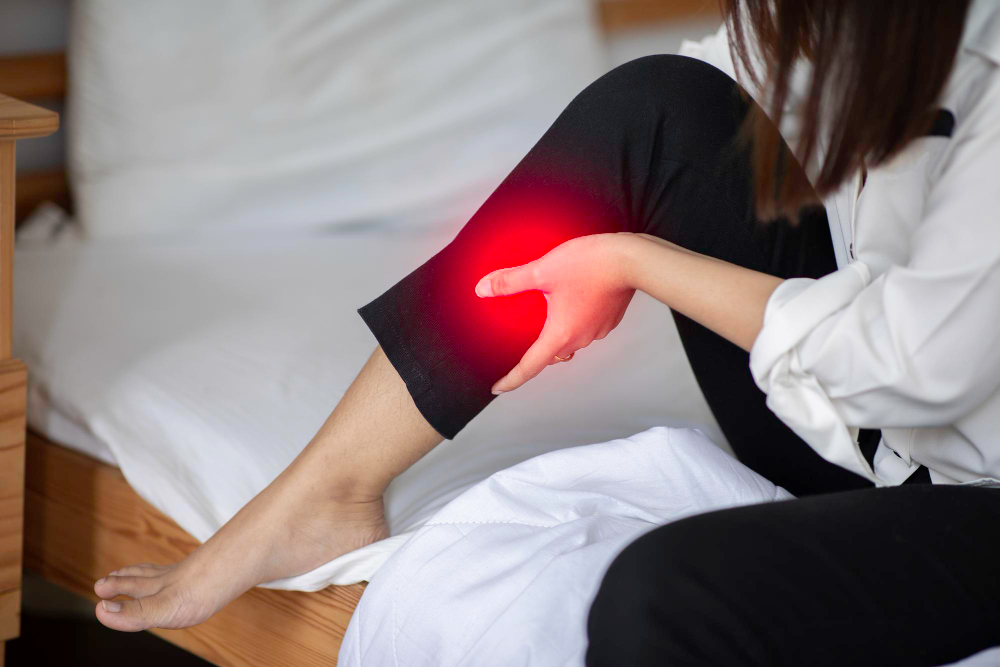
Traditional Treatment Options
Most mainstream medical treatment options (including Mayo Clinic) focus on “relieving the symptoms and improving joint function.” They also warn that several treatment options might be needed or a combination of treatments before determining what’s best for each patient. Some common medications include
- NSAIDs to relieve pain and reduce inflammation (i.e. Advil, ibuprofen).
- Creams or ointments for the skin.
- Steroids such as prednisone to reduce inflammation and pain and slow joint damage.
Physical Therapy as an Option
The Mayo Clinic and other health care providers also use physical therapy to treat arthritis. “Exercise can improve range of motion and strengthen muscles surrounding joints.” If patients aren’t showing improvement after medication and/or physical therapy, then surgery is often the next course of action.
There are three main surgical options:
- Joint repair
- Joint replacement
- Joint fusion
Lifestyle changes might also be suggested to improve symptoms. Patients could be encouraged to lose weight, exercise, use heat and ice packs or other assistive devices like walkers, canes, etc. Low-level light therapy can sometimes be used as an arthritis treatment option as well.
Arthritis Treatment with Infrared Light Therapy
If you have ever suffered from the effects of either osteoarthritis or rheumatoid arthritis, then you know the pain and discomfort this disease can cause. But there is a non-invasive, non-pharmaceutical alternative to treating arthritic pain that goes beyond medication and ointment you rub on your skin; LED red and infrared light therapy.
Just like plants getting their energy from the sun during photosynthesis, red light therapy uses specific, proven wavelengths of light energy to stimulate a natural response in human tissue that can increase circulation, accelerate tissue repair, ease muscle pain, relieve joint stiffness, and enhance overall cell performance on a microscopic level.
Benefits of Red Light Therapy
Those suffering from arthritic pain could no doubt benefit from using LED red and near-infrared light therapy that is FDA-cleared to treat the pain associated with arthritis. Red light therapy works by boosting cellular energy to encourage and enhance the body’s ability to heal itself from the inside out.
The Celluma Difference
Celluma’s patented shape-taking properties allow cells to absorb even more light energy to achieve maximum restorative potential. Not only does this benefit those suffering from a variety of pain conditions, but red light therapy also helps to rejuvenate the skin at the cellular level. Red light therapy can improve the tone and texture of the skin and the combination of red and blue light kills acne bacteria, also improving skin health. Red light therapy can also boost collagen production to improve those fine lines and wrinkles giving skin a healthy glow.
Celluma’s unique and superior red light therapy device design offers pain-relieving therapeutic benefits equal to or better than more expensive, first generation devices, making all-natural pain management a very real possibility for all people who suffer from arthritis and other forms of chronic pain.
All about the Wavelength
When it comes to effective treatment of pain conditions with LED red light therapy, wavelength is the key to success.
Compared to blue light therapy, red and near-infrared wavelengths can penetrate deep into the muscle and joint tissue to alleviate pain, increase circulation and decrease inflammation. LED red light therapy provides compromised cells with extra energy to accelerate the natural repair of compromised tissue cells, foster cell production, and restore homeostasis within the body.
Originally developed by NASA engineers for pain management, injury treatment and muscle atrophy on long-term space missions, red light therapy is used today as a safe and natural method of treating a variety of pain and skin conditions, including arthritis.
With the advancements in the technology of red and near infrared light therapy device design, people can take advantage of self-administered light therapy at home. No longer do you need to go to a physical therapy office for low-level laser therapy. You can now get all the benefits of red light therapy from the comfort of your own home. However, not all light therapy machines are created equal.
Pain Mangement & Red Light Therapy
Celluma Light Therapy’s approach to pain management is inspired by light, proven by science, and cleared by the FDA.
Celluma’s versatile, all-in-one Blue, Red, and Infrared light therapy systems are effective on different parts of the body, and treats an array of pain-causing conditions, including arthritis.
How Does Red Light Therapy Help Pain?
Poor circulation and the lack of oxygen and other essential molecules (i.e., glucose, Adenosine Triphosphate (ATP)) in blood vessels can cause pain or a lack of sensation. Light energy stimulates the release of nitric oxide, causing blood vessels to increase in diameter (vasodilation) and allowing more blood flow, oxygen, and other important factors to be delivered. This increase in oxygen and nutrients, along with stimulation of the light energy emitted from Celluma, increases ATP production, which activates pain relieving pathways. This decreases pain and inflammation and increases tissue regeneration in the localized area to promote healing. This reduction in inflammation is what those suffering from osteoarthritis and rheumatoid arthritis are searching for.
Increased Absorption
Unlike other LED red and near infrared light therapy devices on the market, Celluma has the unique ability to contour close to the skin’s surface for increased light absorption and optimal therapeutic efficacy.
Don’t settle for a red or infrared light therapy device with no FDA clearance and no studies to back up its claims of effectiveness.
Get to know our 14 Celluma light therapy models and see which one is the best option for your treatment needs.
The Celluma SERIES
The following combination of red and near-infrared light therapy devices in our Celluma SERIES can help you combat the inflammation and join pain that comes from arthritis as each has a mode for dealing specifically with aches and pains.
The Celluma PRO/iPRO, LITE/iLITE, RESTORE, HOME, SPORT, our award-winning handheld POD, and our full-body DELUX/XL will all address the joint pain and stiffness caused by arthritis.
Don’t spend another day in pain. Learn more about LED red and infrared light therapy and browse our selection of devices to find the device that’s right for you. Click here to view all your red light therapy device options.
What the Research Says and Infrared Light Therapy
For those suffering from joint pain, stiffness, and inflammation, there is hope in red light therapy and the research is there to support the use of it in treating arthritis. In a 2015 study, Michael Hamblin et al., discussed the use of low-level light therapy for musculoskeletal pain. According to the study, “Pain is the most common reason for physician consultation in the United States. One out of three Americans is affected by chronic pain annually. The number one reason for missed work or school days is musculoskeletal pain. Currently accepted therapies consist of non-steroidal anti-inflammatory drugs, steroid injections, opiate pain medications and surgery, each of which carries their own specific risk profiles.”
“What is needed are effective treatments for pain which have an acceptably low risk-profile. For over forty years, low level laser (light) therapy (LLLT) and LED (light emitting diode) therapy (also known as photobiomodulation) has been shown to reduce inflammation and edema, induce analgesia, and promote healing in a range of musculoskeletal pathologies. The purpose of this paper is to review the use of LLLT for pain, the biochemical mechanisms of action, the dose response curves, and how LLLT may be employed by orthopedic surgeons to improve outcomes and reduce adverse events”
“With the predicted epidemic of chronic pain in developed countries, it is imperative to validate cost-effective and safe techniques for managing painful conditions which would allow people to live active and productive lives. Moreover the acceptance of LLLT (which is currently being used by many specialties around the world) into the armamentarium of the American health care provider would allow for additional treatment options for patients. A new cost-effective therapy for pain could elevate quality of life while reducing financial strains.”
Low-Level Light Therapy in the Treatment of Pain
This study reveals some interesting conclusions and we will quote extensively here:
“Acute orthopedic conditions such as sprains [52,53], strains, post-surgical pain, a whiplash injury [54], muscular back pain, cervical or lumbar radiculopathy [55,56], tendinitis [57,58] and chronic conditions such as osteoarthritis [59–64], rheumatoid arthritis, frozen shoulder [65], neck and back pain [56], epicondylitis [66], carpal tunnel syndrome [67,68], tendinopathy [69], fibromyalgia [70], plantar fasciitis [70], post tibial fracture surgery [9] and chronic regional pain syndrome are amenable to LLLT. Dental conditions producing pain such as orthodontic procedures [71], dentine hypersensitivity [72], and third molar surgery [73] respond well to treatment with LLLT. Neuropathic pain conditions can also be treated such as post herpetic neuralgia [74], trigeminal neuralgia (10), and diabetic neuropathy [75]. Due to the wide spectrum of conditions, one would surmise that multiple mechanisms can operate to achieve pain relief.”
“The peripheral nerve endings of nociceptors, consisting of the thinly myelinated A∂ and unmyelinated, slow-conducting C fibers, lie within the epidermis. This complex network transduces noxious stimuli into action potentials. Moreover, these nerve endings are very superficial in nature and thus are easily within the penetration depths of the wavelengths used in LLLT (Figure 4).”
“The cell bodies of neurons lie within the dorsal nerve root ganglion, but the elongated cytoplasm (axons) of the neurons extends from the cell body to the bare nerve endings in the surface of the skin. The direct effect of LLLT are initially at the level of the epidermal neural network, but the effects move to nerves in subcutaneous tissues, sympathetic ganglia, and the neuromuscular junctions within muscles and nerve trunks.”
What’s Really Happening in the Body
“LLLT applied with a sufficient level of intensity causes an inhibition of action potentials where there is an approximately 30% neural blockade within 10 to 20 minutes of application, and which is reversed within about 24 hours [76]. The laser application to a peripheral nerve does have a cascade effect whereby there is suppressed synaptic activity in second order neurons so that cortical areas of the pain matrix would not be activated.”
ATP is the Key
“Adenosine triphosphate (ATP) is the source of energy for all cells, and in neurons this ATP is synthesized by mitochondria while they are located in the dorsal root ganglion. These mitochondria are then transported along the cytoskeleton of the nerve by a monorail system of molecular motors. LLLT acts like an anesthetic agent, in that both LLLT and anesthetics have been shown to temporally disrupt the cytoskeleton for a matter of hours as evidenced by formation of reversible varicosities or beading along the axons, which in turn cause mitochondria to “pile up” where the cytoskeleton is disrupted [77].”
“The exact mechanism for this effect is unknown but it is not a thermal action. It has been shown that LLLT at the correct dose decreases mitochondrial membrane potential (MMP) in DRG neurons and that ATP production is then reduced [78] so perhaps the lack of ATP could be cause of this neural blockade. The most immediate effect of nociceptor blockade is pain relief which occurs in a few minutes and has been shown by the timed onset of a conduction blockade in somatosensory-evoked potentials (SSEPs) [76].”
Short, Medium, and Long-Term Effects
“This inhibition of peripheral sensitization not only lowers the activation threshold of nerves but also decreases the release of pro inflammatory neuropeptides (i.e. substance P and CGRP). In persistent pain disorders this reduction of tonic input to activated nociceptors and their synaptic connections, leads to a long-term down-regulation of second-order neurons [78].”
“The modulation of neurotransmitters is a further possible mechanism of pain relief, as serotonin and endorphin levels have been shown to increase in animal models [79,80] and following laser treatment of myofascial pain in patients [81]. Thus, LLLT can have short-, medium- and long-term effects. Fast acting pain relief occurs within minutes of application, which is a result of a neural blockade of the peripheral and sympathetic nerves and the release of neuromuscular contractions leading to in a reduction of muscle spasms [82,83].”
Can Low-level Light Therapy Reduce Inflammation?
“In the medium term there is a decrease of local edema and a reduction of inflammation within hours to days [84]. The action of LLLT in reducing swelling and inflammation has been well established in animal models as well as in clinical trials. The numbers of inflammatory cells has been shown to be reduced in joints injected with protease [85], in collagen-induced rheumatoid arthritis [86], and in acute pulmonary inflammation [87]. The expression levels of pro-inflammatory cytokines have been shown to be reduced by LLLT in burn wounds [88], in muscle cryo lesions [89] and in delayed type hypersensitivity [90]. The long-term effects of LLLT occur within a week or two and can last for months and sometimes years as a result of improved tissue healing.”
Orthopedic Outcomes
“According to the more than 4000 studies on pub.med.gov, it can be concluded that the majority of laboratory and clinical studies have demonstrated that LLLT has a positive effect on acute and chronic musculoskeletal pain. Due to the heterogeneity of populations, interventions and comparison groups, this diversity means that every single study has not been positive. Pain is a very complex condition which presents in different forms with an interplay of mechanical, biochemical, psychological and socioeconomic factors. It is extremely challenging to compare LLLT to other treatments, and LLLT regimens are complicated by different lengths of treatment, all without standardization of wavelengths and dosages. Currently, there have been no long-term (greater than 2-year follow up) human clinical studies that have evaluated LLLT. The overall positive short term clinical studies in addition to strong laboratory studies should give the clinical confidence that LLLT may be beneficial for many individuals suffering from musculoskeletal pain, regardless of the cause.
Conclusion
“One has to be realistic about the therapeutic use of LLLT. The previous discussion has shown that LLLT is beneficial for pain relief and can accelerate the body’s ability to heal itself. LLLT has a long history and strong basic science evidence, which supports its use in pain management. It has few side effects and is well tolerated by the elderly. A laser or LED does not correct situations involving structural deficits or instabilities whether in bone or in soft tissue. Also, LLLT should only be used as an adjuvant therapy for pain relief in patients with neuropathic pain and neurologic deficits. Successful outcomes, like all medical management, depend on good clinical skills linked with an understanding of the nature of injury, inflammation, repair, pain, and the mechanism of laser and LED effects.”
Alternative Treatment Option: Red Light Therapy
As you can see from the research, infrared light therapy or low-level light therapy as it is also called can be an effective alternative treatment to heal the cause of the arthritis symptoms and not just the symptoms themselves.
References:
The Use of Low Level Laser Therapy (LLLT) For Musculoskeletal Pain
Howard B Cotler1,2,*, Roberta T Chow3, Michael R Hamblin4,5,6, and James Carroll7
1 Gulf Coast Spine Care LTD, USA
2 Laser Health Spa LLC, USA
3 Brain and Spine Research Institute, University of Sydney, Australia
4 Wellman Center for Photo medicine, Massachusetts General Hospital, USA
5 Department of Dermatology, Harvard Medical School, USA
6 Division of Health Sciences and Technology, USA
7 Thor Photomedicine Ltd, UK
